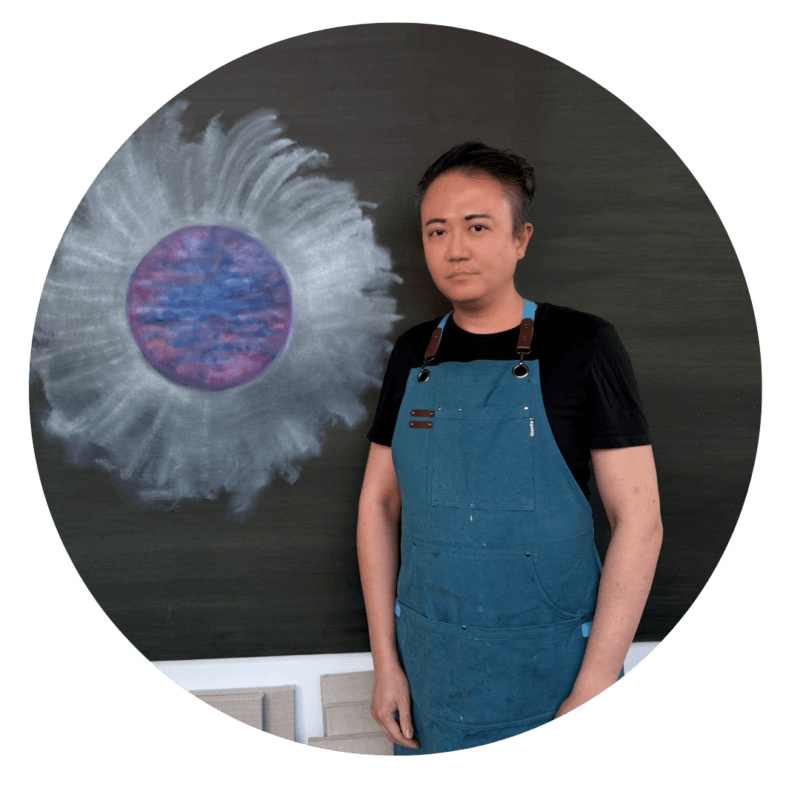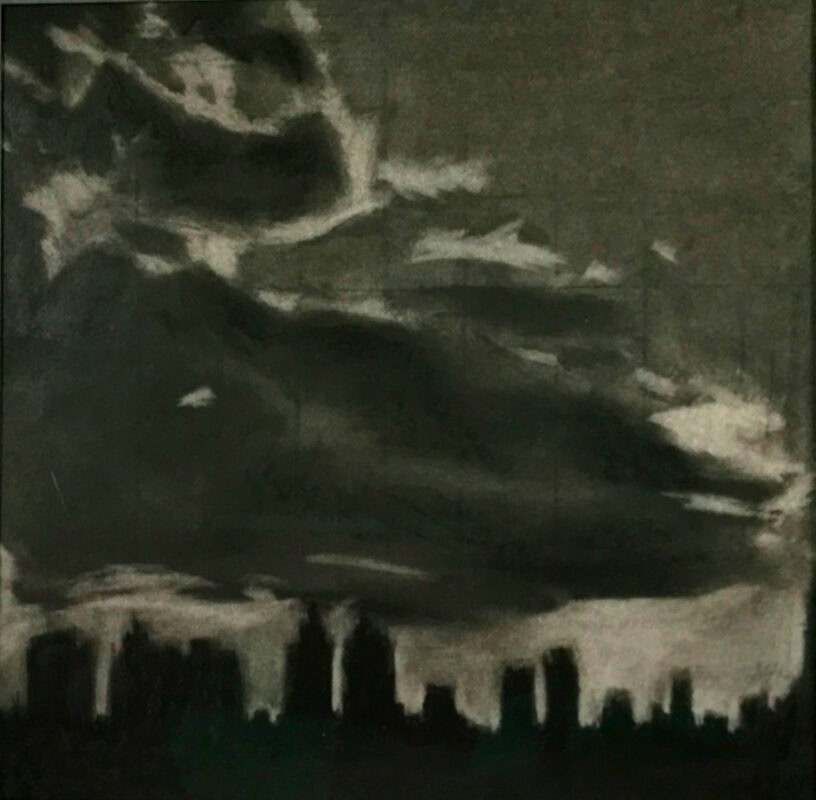
Alex Z. Wang’s work captures the emotional architecture of urban life—where skyline and psyche blur into atmospheric abstraction. With a practice rooted in movement, memory, and presence, his works evoke the quiet tension between motion and stillness. Charcoal and oil serve as conduits for suspended energy, while his gestural language draws from years of observing contemporary dance. Wang’s compositions invite viewers into moments of vulnerability and reflection, offering a tactile interpretation of the unseen rhythms that shape both city and self.
Origin: New York City
Currently Exhibiting in: Bushwick, Brooklyn
Website: alexzwang.com
Social Media: Instagram: @xanderandalex
Originally trained in painting at the Art Students League, Parsons, and Cooper Union, Alex Z. Wang left behind a decade-long career in luxury brand strategy to pursue his visual art full-time. The transition marked a profound turning point in his life, shifting him from structure and narrative control to a process driven by intuition, rhythm, and raw emotion.
His work is deeply influenced by contemporary dance and opera—live performances that Wang considers mirrors of human vulnerability and transformation. These experiences filter into his studio practice as a visual form of choreography, with each composition acting as a still embodiment of motion. Using oil, ink, and charcoal, Wang creates abstract atmospheres that echo the liminal spaces of city life—the hush between movements, the tension before collapse, the shape of breath in silence.
Wang splits his time between a Bushwick painting studio and a secondary space for works on paper and experimental photography. His evolving practice explores themes of emotional residue, architectural memory, and the fluid intersections of body, space, and perception.
Featured Artwork at Bushwick Gallery
West Side Story
Year of Creation: 2016
Medium: Charcoal on paper with archival varnish
Dimensions: 23.5” x 23.5” (framed)
Price: $1,600
Description:
Captured from the rooftop of the Metropolitan Museum, West Side Story suspends the familiar skyline of Manhattan in a moody veil of charcoal. Clouds surge overhead with the force and grace of dancers mid-gesture, blurring the boundary between architectural form and emotional atmosphere. This work marks a pivotal shift in Wang’s practice—from precise control to expressive surrender—inviting viewers into a threshold space where memory, tension, and motion dissolve into shadow.

Exhibition Information
April 2025: “Urban Narratives: The City as Canvas”
Curated by: Fern Messa Joson
Theme: Turning the cityscape into a canvas, this exhibition captures the raw, vibrant energy of urban life through graffiti, street photography, painting, and more.
Exhibition Dates: April 3 – April 10, 2025
Opening Reception: Thursday, April 3 | 6 PM – 8 PM
Guided audio experience
For accessibility, the full video transcript is provided below for those who prefer to read or are unable to listen.
“As you stand before West Side Story, allow yourself to slow down. Let the skyline blur. Let the shadows breathe. In this charcoal rendering, Alex Z. Wang captures more than just the architecture of Manhattan—he captures its emotional weather.
Drawn from the rooftop of the Metropolitan Museum, the piece immerses you in a city not seen, but felt. Buildings don’t stand so much as hover, wrapped in a shifting atmosphere that feels more like memory than form. The clouds above, dense and dynamic, move like dancers mid-gesture—an echo of Wang’s deep connection to contemporary dance and performance. This is choreography in charcoal.
Look closely at the mark-making. It’s fluid, urgent, soft in some places, scraping in others. You can feel the hand in the work, the pressure, the breath. It’s a turning point in Wang’s artistic journey—from control to surrender. From clarity to emotion.
The skyline becomes a threshold, a place between presence and absence. There’s tension here, but also release. The city becomes a stand-in for the self—its outlines constantly dissolving and reforming.
In West Side Story, Wang asks you not just to see the city, but to feel its weight, its hush, its motion. This is Manhattan not as monument, but as mood—a quiet storm of structure, longing, and suspended energy.”